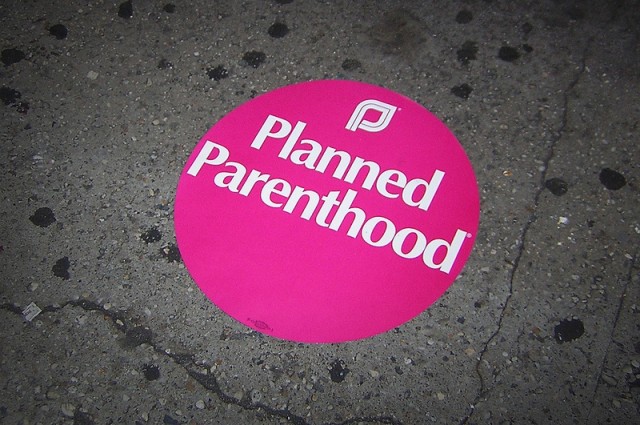One fact we know thanks to science is that life begins at conception. And scientists are continuing to learn more about this. Last year, researchers found that a zinc “spark” is released when the sperm fertilizes the egg, at which point a new life is conceived.
The pro-abortion movement knows that this is when life begins. Some abortion proponents have admitted that abortion ends a human life. So have those who have worked in the abortion industry, as revealed in Live Action video projects involving conversations with former Planned Parenthood workers from Planned Parenthood.
And yet, the March for Science, which occurred on April 22nd (Earth Day), made no mention of the right to life, though it is a scientific cause, as Cullen Herout writes for the Federalist.
Planned Parenthood Action Fund jumped on the “science” bandwagon with a blog by Liz Galst, titled, “It’s Science: 5 Facts You Need to Know About Abortion.” And as you’d expect from the organization that commits 34 percent of all abortions in the United States, readers are treated to biased, pro-abortion talking points.
There’s nothing in the blog about how life begins at conception, but here are the five “facts” Planned Parenthood felt were pro-science:
1. “Abortion is really safe,” writes Galst.
Safe for whom, Ms. Galst? Oh, that’s right — the growing preborn child directly killed in an abortion is completely ignored. Abortion can never be “really safe” for the child who dies.
But the safety of the child’s mother is at risk as well, even though the abortion industry makes the dubious claim that abortion is safer than childbirth, and that there are low chances of complications or trauma. But the truth is that there are many potential side effects and risks of abortion, and abortion is certainly made no more safe when the abortion industry seeks to dismiss and discredit the mere possibility of their occurrence.
The abortion industry should not be left to regulate itself, but unfortunately, much of the time, it is. Because of this, it has been regarded as one of the nation’s greatest health crises. Unfortunately, however, it is often the abortion industry which is protected instead of women. In the Whole Woman’s Health v. Hellerstedt decision last summer, even the U.S. Supreme Court chose abortion access — no matter how unsafe it may be — over women’s health and safety.
2. Medication abortion “is safe and effective,” claims Galst, responding to unnamed sources which say it doesn’t work.
For women who took the abortion pill regimen with the idea that they were undergoing something similar to a heavy period, but instead experienced a host of harrowing events and side effects, the pill wasn’t quite as “safe” as they expected. Below, the risks of the abortion pill regimen are explained by former abortionist Dr. Anthony Levatino:
Live Action News contributor and ClinicQuotes.com founder Sarah Terzo has documented women’s experiences with the abortion pill. And Abby Johnson, former Planned Parenthood director turned pro-life activist, has shared her own frightening medication abortion experience.
Sadly, medication abortion does work much of the time — but thankfully, it may be possible to reverse the procedure, if caught early enough. As of May 2016, doctors had saved 175 babies through the reversal procedure. Arizona has picked up on this trend with legislation requiring that women be informed about possible abortion pill reversal.
3. Galst claims that “Abortion has no impact on a woman’s risk of breast cancer.”
She includes a brief quote from the American Cancer Society, which claims that “scientific research studies have not found a cause-and-effect relationship between abortion and breast cancer.” But the same article also acknowledges that “it is often hard to study its long-term effects” of abortion, and that “[s]ome case-control studies… have found an increase in risk.”
Planned Parenthood has tried to bury this study from India showing a link between breast cancer and abortion. And inexplicably, the American Cancer Society and others, while admitting that several studies have found a causal link (even a National Cancer Institute researcher found a link, and that study was removed from the NCI website), conclude that others have not, so therefore, there is no link. In this case, where it appears the ACS and NCI may be covering up even their own research, can the ACS and NCI really be trusted?
Debby Efurd, who has endured both an abortion and breast cancer, has spoken out about how denying a link hurts women.
4. In response to concerns that IUDs and emergency contraception can cause very early abortions, Galst, with original emphasis, writes, “Emergency contraception is birth control, NOT abortion.”
The concern with emergency contraception is that because it is taken after sexual intercourse has already occurred, it can cause a very early abortion. For those who have not already conceived, it is contraception; for those who have already conceived, it can act as an abortifacient — even if you insist it doesn’t, in all caps.
As for IUDs, even pro-abortion Slate admits the IUD can be painful. Live Action News covered the story of a 22-year-old woman who needed a hysterectomy after having complications with her IUD. A link in that article additionally directs readers to information about IUDs and other forms of birth control, as provided by Abby Johnson, a former Planned Parenthood director.
Similar to the concerns with emergency contraception, IUDs can also act as abortifacients.
5. Galst claims, “Women who have abortions are no more anxious or depressed than women who get pregnant but don’t undergo the procedure — but women who face barriers to care do experience distress.”
Galst refers to a study from last fall, which references data from the Turnaway Study by the University of California-San Francisco, which interviewed women who had abortions, and those who did not, from 2008 to 2010. This more recent study interviewed women five years after they had their abortions, but it also touts findings involving the feelings of women a mere week after their decisions to either abort or continue their pregnancies.
The initial study was heavily criticized. Randall K. O’Bannon, the Director of Education and Research from the National Right to Life Committee, criticized the study, also referring to the debunked Turnaway Study.
Five years may not be a sufficient amount of time for women to know how they truly feel about their abortions. Love Matters and Silent No More, which provide a platform for women to tell their stories of abortion regret, record accounts from women who say it took several years — some decades — for them to realize the effects of abortion on their lives.
“I was 18 when I got pregnant. At three months pregnant, I had an abortion,” shared Tewannah Aman. “About seven years later… my heart broke. I was so overcome with grief. How could I have taken the life of my unborn child?”
Dale and Angela shared about the “denial” they went through for ten years after they chose abortion.
Galst, and the abortion movement in general, often refer to already-debunked studies to support their contentions. They often don’t look to the long-term effects, thus writing off the link between abortion and mental stress.
This is another tragic way in which the abortion movement disregards women who have had abortions from which they may suffer mentally and psychologically. The American Cancer Society, which Galst herself cites, acknowledges that “it is often hard to study [abortion’s] long-term effects.” It seems, however, that the pro-abortion movement chooses to ignore this possibility, refusing to admit that women may suffer from their abortions.
It is almost laughable that the abortion movement would talk of science while denying the science of human development. Unfortunately, it is no laughing matter when preborn lives and the health and safety of their mothers are at risk.








